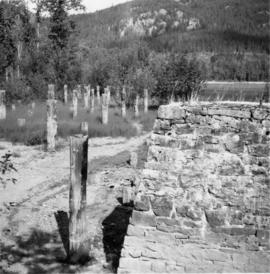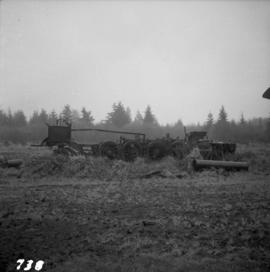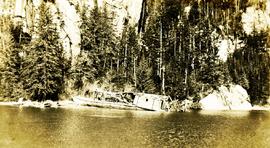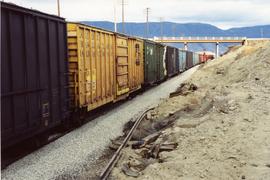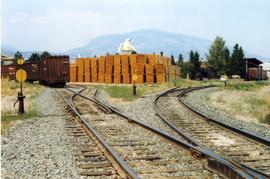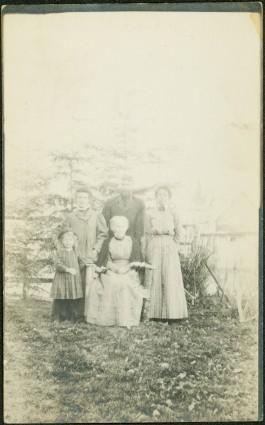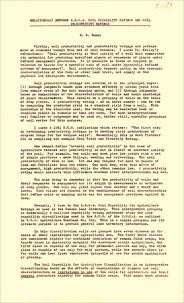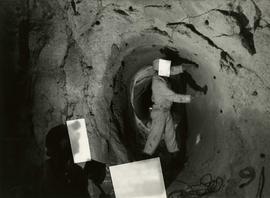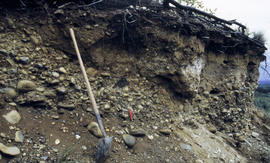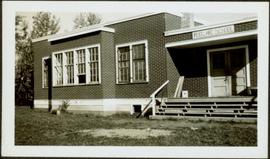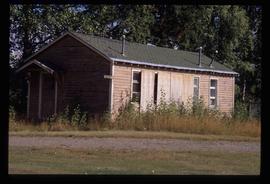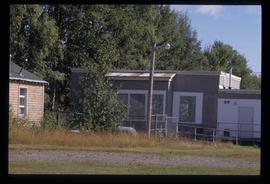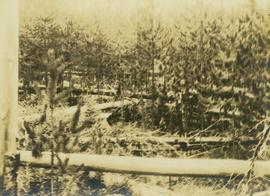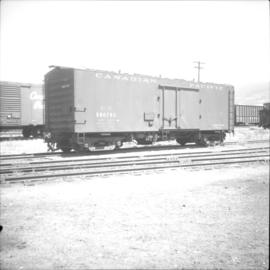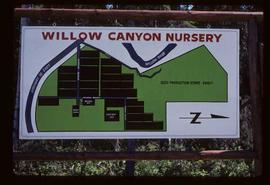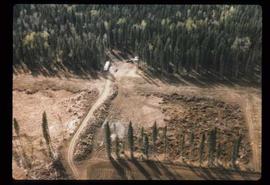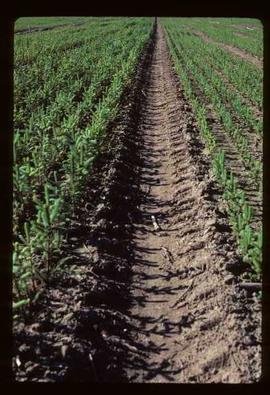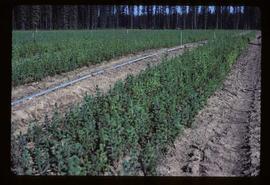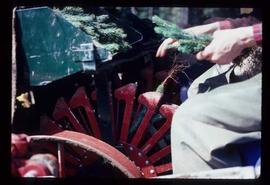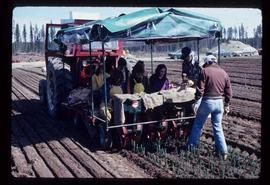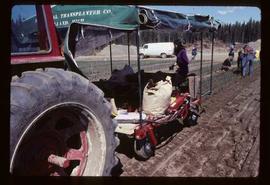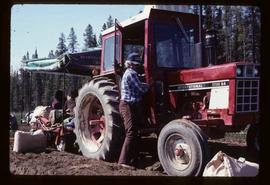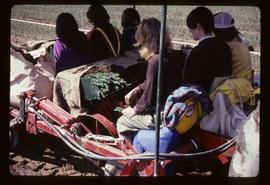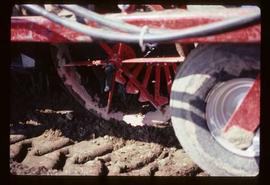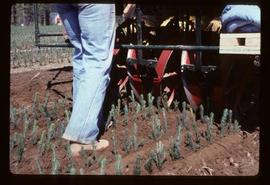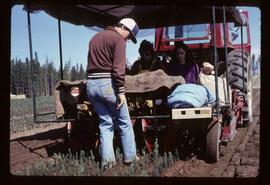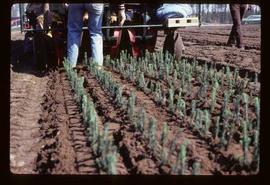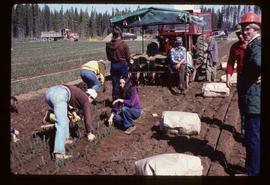Photograph depicts the remains of a sawmill located at the north end of Trout Lake. Stone work in the foreground was built upon a log raft and had heavy machinery secured to its top.
Photograph depicts the remains of 2-8-2 Baldwin locomotive #101 at the Rayonier Railroad camp, north of Hoquiam in Washington. It was built in 1913, weighs 70 1/2 tons and has 27, 000 lbs. of tractive effort. It is on the scrapping line at the central depot.
Photograph depicts an abandoned boat named "The Mockingbird"; photographer notes this boat as a possible relic of the gold rush. Handwritten annotation below photograph reads, "Mocking Bird, a Klondike Craft".
Photograph depicts the first train to move over the remade track after a derailment in Savona.
Photograph depicts relocated and relaid trackage that served a sawmill located at Lakeshore and Bay Street, at the north end of downtown Kelowna.The rail approach was then via Weddell. Two spurs on the left took chip cars while the two spurs on the right were for box cars filled with finished products.
Photograph depicts an elderly couple, two women, and a young girl posed in yard. Trees and building visible behind fence in background.
File consists of a speech given by Gary Runka entitled "Relationship Between A.R.D.A. Soil Capability Ratings and Soil Productivity Ratings".
Commentary on this speech by Barry Smith of the Ministry of Agriculture and Lands:
"This is a very useful overview of the agricultural capability ratings.
While no mention is of course made in this (circa) 1969 speech to the BC farmland preservation program, its value rests in the importance of the BCLI in the original designation the ALR and its future administration.
For anyone that is or has been involved with the farmland preservation program, this single sentence within the speech, made about 4 or 5 years before the designation of the ALR, provides an important insight into the value of the CLI and its relationship to farmland preservation. "For example. Class 5 soils while restricted in use to pasture or hay can produce very high yields."
Item is a photograph of the Reid Lake School.
Image depicts a building in Reid Lake
Image depicts a building in Reid Lake
In the mid-1990s, Dr. Paul Sanborn worked with Dr. Lito Arocena of UNBC to assemble and interpret basic physical, chemical, and mineralogical data for typical soils at important long-term forestry research sites in central and northeastern BC. The key results were published as:
J.M. Arocena and P. Sanborn. 1999. Mineralogy and genesis of selected soils and their implications for forest management in central and northeastern British Columbia. Canadian Journal of Soil Science 79: 571-592. https://doi.org/10.4141/S98-07
Nine pedons were involved, with 7 located at the sites of 4 Ministry of Forests Experimental Projects (E.P.), and 2 at the Aleza Lake Research Forest.
Item is an original draft copy of "Regional Landscapes for the British Columbia Parks System".
Item is an original report by H.M. Pogue titled "Regeneration and Growth of White Spruce After Logging".
Photograph depicts regenerating pine trees in a burn area.
Photograph depicts an all steel refrigerated car in the CPR yard in Penticton.
Reforestation - Forest Centre.
Reforestation - Willow Canyon Nursery.
Reforestation - Willow Canyon Nursery.
Reforestation - Willow Canyon Nursery.
Reforestation - Willow Canyon Nursery.
Reforestation - Willow Canyon Nursery.
Reforestation - Willow Canyon Nursery.
Reforestation - Willow Canyon Nursery.
Reforestation - Willow Canyon Nursery.
Reforestation - Willow Canyon Nursery.
Reforestation - Willow Canyon Nursery.
Reforestation - Willow Canyon Nursery.
Reforestation - Willow Canyon Nursery.
Reforestation - Willow Canyon Nursery.
Reforestation - Willow Canyon Nursery.
